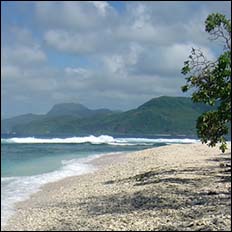Human-Use Resources
Environmental Sensitivity Index (ESI) method classifies these resources into categories and displays their locations on ESI maps. To see the full list of human-use resource categories and map symbols, click the Resources on ESI Maps link, above.
Four types of human-use resources are typically mapped:

- High-use shoreline access and recreational use areas, such as boat ramps, marinas, recreational beaches, and sport-fishing and diving areas.
- Officially-designated natural resource management or protected areas, such as national parks, marine sanctuaries, national wildlife refuges, preserves, and reserves.
- Resource extraction sites, such as aquaculture sites, locations of subsistence and commercial fisheries, log storage sites, mining leases, and surface water intakes.
- Water-associated archaeological, historical, and cultural sites, including lands managed by Native Americans. Cultural sites located in the intertidal zone or close to the shoreline where they could be damaged by cleanup crews are at particular risk.
Notes: (1) The exact locations of some archaeological and cultural resources cannot be disclosed because of the risk of vandalism. In such cases, the resources are shown on the map either by a polygon enclosing a larger area or by a map symbol that is placed near (but not exactly at) the location. (2) People using the ESI method to map human-use resources are encouraged to denote not only surface water intakes, but also groundwater recharge zones and well fields. Groundwater protection can be of particular concern when light petroleum products are spilled in rivers, and when wells are located in the floodplain and are hydraulically connected to the river.
More Information about ESI Maps
Anatomy of ESI Maps Learn about the basic elements of ESI maps, including the types of information that are mapped.
Shoreline Rankings Learn how shorelines are ranked on ESI maps according to their sensitivity to oil, the natural persistence of oil, and the expected ease of cleanup after an oil spill.
Biological Resources Learn how ESI maps categorize and display oil-sensitive animals and their habitats, and habitats that are themselves sensitive to spilled oil (such as coral reefs).
 An official website of the United States government.
An official website of the United States government. 